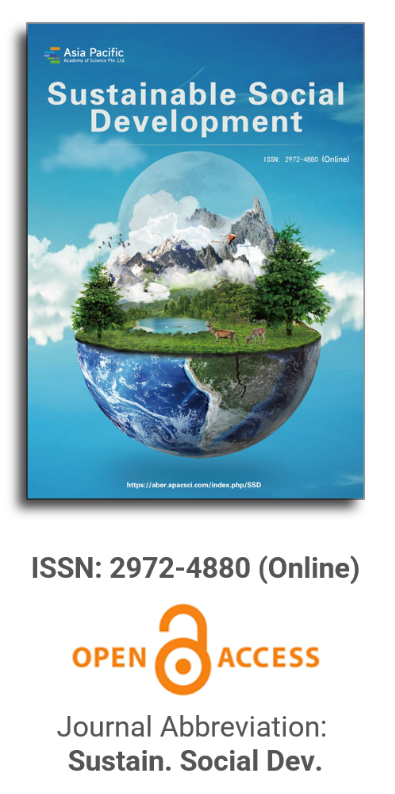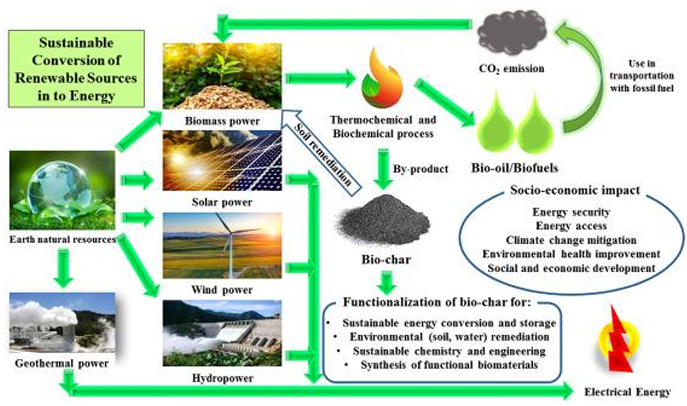
Asia Pacific Academy of Science Pte. Ltd. (APACSCI) specializes in international journal publishing. APACSCI adopts the open access publishing model and provides an important communication bridge for academic groups whose interest fields include engineering, technology, medicine, computer, mathematics, agriculture and forestry, and environment.

English language teaching and specific learning disorders: A case study
Vol 1, Issue 1, 2023
Download PDF
Abstract
The study of a foreign language for students with Specific Learning Disorders (SLDs) can often be a tremendous challenge, making this process extremely complex (most of the difficulties arise from spelling and lexis with major consequences for reading, writing and pronunciation). This also entails a challenge for educators and educational institutions having the task of responding to students’ needs by becoming more flexible and equipped to understand, value and adapt to the differences of their students in order to provide them with quality and inclusive education and equal learning opportunities. The purpose of this paper is to present a study conducted among university students with SLDs with the aim to identify approaches and teaching strategies to foster effective and meaningful English language learning. The underlying intention is to provide useful insight into future trends and definitions of guidelines and viable strategies in the field of education and SLDs. Therefore, 82 university students with SLDs were randomly assigned either to an experimental group (EG, n = 41) who received English lessons designed according to their individual needs and based on compensatory measures, or to a control group (CG, n = 41) who participated in conventional English lessons. Results suggest that the students who benefited from a variety of individualised supports were able to improve their foreign language skills.
Keywords
References
- Cornoldi C. Learning Difficulties and Disorders (Italian). Il Mulino; 2007.
- Arconzo G. The rights of people with dyslexia and other specific learning disorders: A review four years after the enactment of Law No. 170 of 2010 (Italian). In: Dislessia E Apprendimento Delle Lingue: Aspetti Linguistici, Clinici E Normativi. Centro Studi Erickson; 2014.
- Giaconi C. The difficult integration of pupils with disabilities in Italian schools from the 1970s to the present: a reflection of special pedagogy and didactics (Italian). In: Ascenzi A, Sani R (editors). Inclusione E Promozione Sociale Nel Sistema Formativo Italiano Dall’Unità Ad Oggi. FrancoAngeli; 2020. pp. 261–268.
- Fabbro F. Neuropedagogy of Languages (Italian). Astrolabio-Ubaldini; 2004.
- Daloiso M. Foreign Languages and Specific Learning Disorders. A Framework for Designing Accessible Glottodidactic Materials (Italian). Loescher; 2014.
- Brooke LE, Lin A, Ntoumanis N, Gucciardi DF. The development of a sport-based life skills program for young people with first episode psychosis: An intervention mapping approach. Mental Health and Physical Activity 2020; 19: 100330. doi: 10.1016/j.mhpa.2020.100330
- Balboni PE. The Challenges of Babel. Teaching Languages in Complex Societies (Italian), new edition. UTET; 2011.
- Caon F. Language Education in the Differentiated Ability Classroom (Italian). Loescher; 2016.
- Cornoldi C. Learning and Memory in Humans (Italian). UTET; 1986.
- Santipolo M. From Sociolinguistics To Glottodidactics (Italian). UTET; 2002.
- Serragiotto G. The Assessment of Language Learning (Italian). Loescher; 2016.
- Daloiso M. Foreign Languages and Developmental Dyslexia. Theory and Methodology for Accessible Glottodidactics (Italian). UTET; 2012.
- Castagna M. Designing Training. Methodological Guide for The Design of Classroom Work (Italian). FrancoAngeli; 2016.
- Harrar V, Harris LR. Multimodal ternus: Visual, tactile, and multisensory grouping in apparent motion. Perception 2007; 36(10): 1455–1464. doi: 10.1068/p5844
- Reid G. Dyslexia. A Practitioner’s Handbook. Wiley-Blackwell; 2009.
- Balboni PE. Teaching Techniques for Language Education (Italian). UTET; 1998.
- Molisso V, Tafuri D. Specific Learning Disorders and Sports (Italian). Idelson Gnocchi; 2020.
- Daloiso M. Language education and special needs. Building glottodidactic accessibility (Italian). Educazione Linguistica. Language Education (EL.LE) 2012; 1(3): 495–513.
- Balboni PE. Doing Language Education (Italian). UTET; 2008.
- De Santis G, Pirani E, Porcu M. Population Report. Education in Italy (Italian). il Mulino; 2019.
- Giardini D. A second language for Italian: what scenarios for the discipline and the profession (Italian). Bollettino Itals 2016; 14(66): 30–56.
- Favaro G. Italian that includes: The language for not being foreign. Attentions and proposals for a language training project in the time of plurality (Italian). Italiano LinguaDue 2016; 8(1): 1–12.
- Cavioni V. Emotional, social and behavioral aspects of students with specific learning disorder (Italian). Psicologia dell’Educazione 2018; 1: 91–106.
- Best E, Clark C. The Role of Audiobooks to Engage Reluctant Readers and Underrepresented Children and Young People. A National Literacy Trust Research Report. National Literacy Trust; 2021.
- Rose DH, Meyer A, Hitchcock C. The Universally Designed Curriculum: Accessible Curriculum and Digital Resources. Harvard Education Press; 2005.
- Melero Rodriguez CA, Caon F, Brichese A. Accessible and inclusive language education. Promoting effective language learning for foreign students and students with DSA (Italian). EL.LE 2018; 7(3): 341–366.
- Jehl C, Royet JP, Holley A. Odor discrimination and recognition memory as a function of familiarization. Perception and Psychophysics 1995; 57(7): 1002–1011. doi: 10.3758/BF03205459
- Curzio O. Reflections on LS Vygotsky’s “thought and language” (Italian). Riabilitazione E Apprendimento 1998; 18: 127–154.
- Garibaldi C, Sisti F. The influence of enneagram type on communicative competence. In: Landolfi L (editor). Framing Minds. English and Affective Neurosciences. Liguori; 2019. pp. 113–122.
- Scherwood L. Human Psychology. From Cells to System. Brooks/Cole-Thomson; 2004.
- Chaudhari T. Soft skills: Types, characteristics and importance. Journal of Commerce and Trade 2022; 16(2): 9–12.
- Bruner J. The Culture of Education. Harvard University Press; 1996.
- Bruner J. Acts of Meaning. Harvard University Press; 1990.
- Emili EA, Macchia V. Reading Inclusion. Picture Books and Books for Each and Everyone (Italian). ETS; 2020.
Supporting Agencies
Copyright (c) 2023 Maria Cristina Nisco, Francesco Tafuri, Emma Saraiello, Mattia Caterina Maietta
License URL: https://creativecommons.org/licenses/by/4.0

This site is licensed under a Creative Commons Attribution 4.0 International License (CC BY 4.0).

Prof. Kittisak Jermsittiparsert
University of City Island, Cyprus





It is with deep regret that we announce the cancellation of the Forum on Sustainable Social Development & Computing and Artificial Intelligence, originally scheduled for June 15, 2025.

